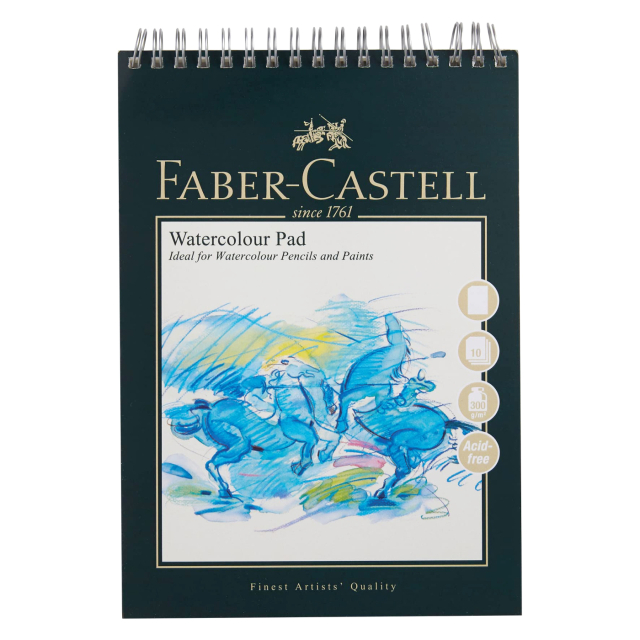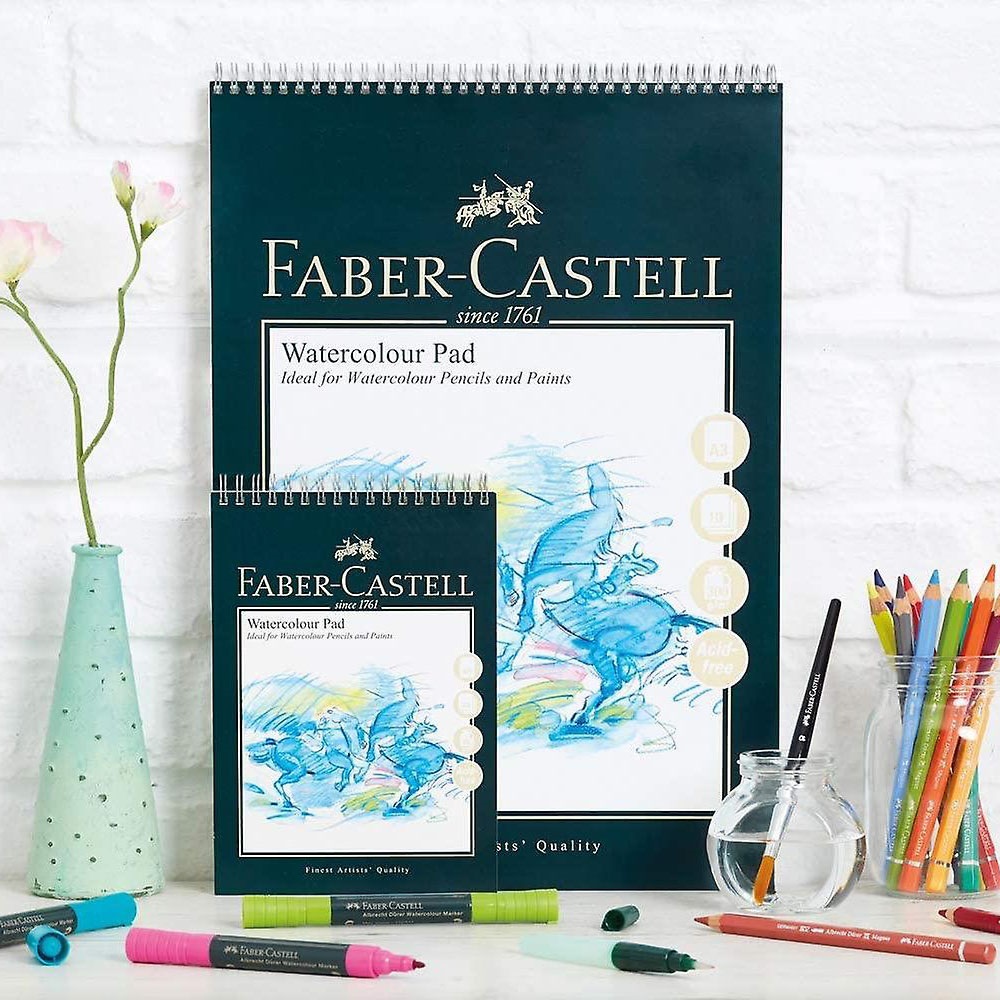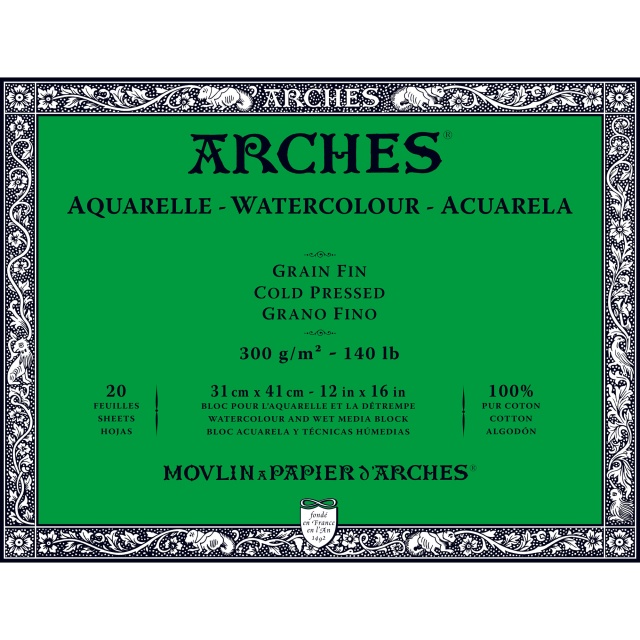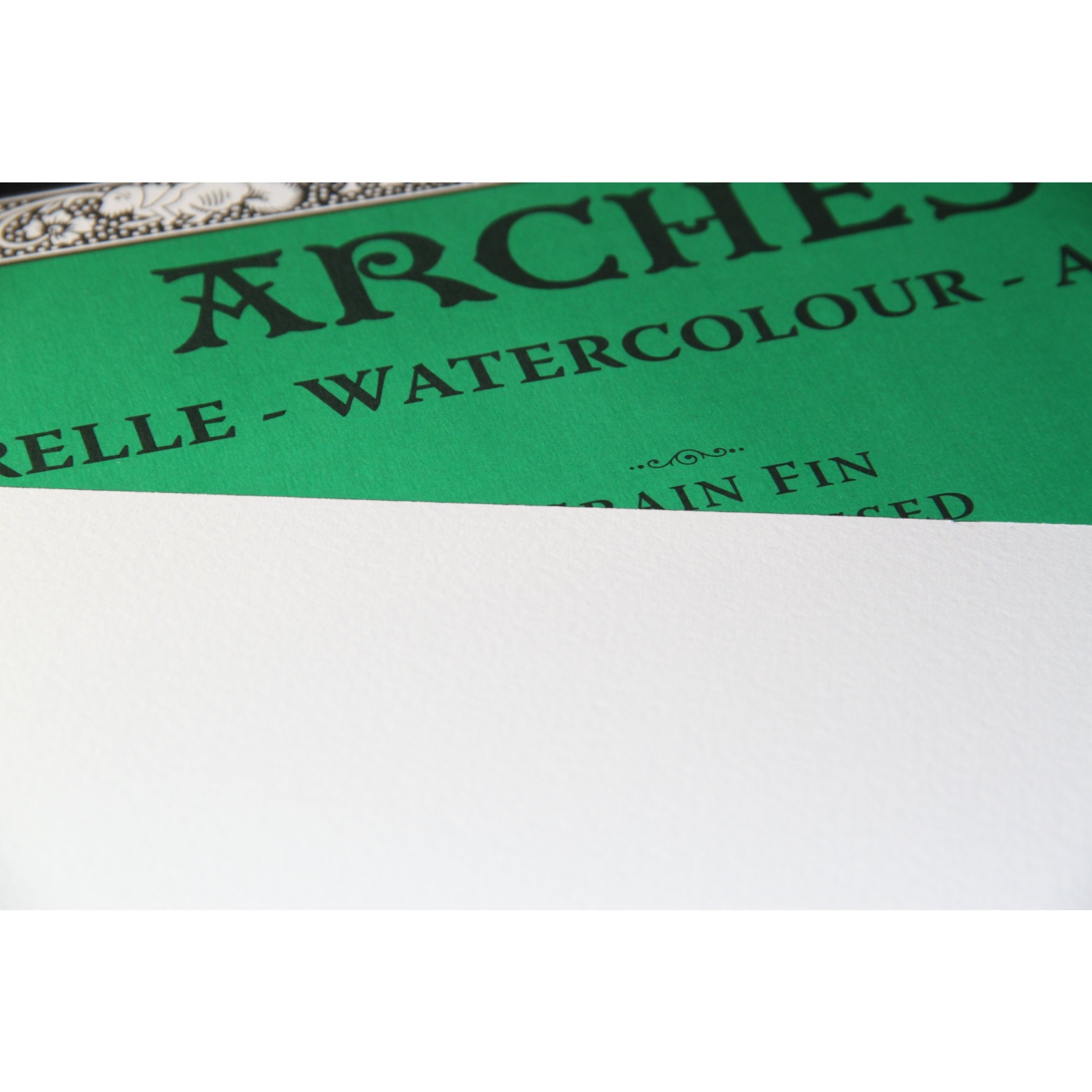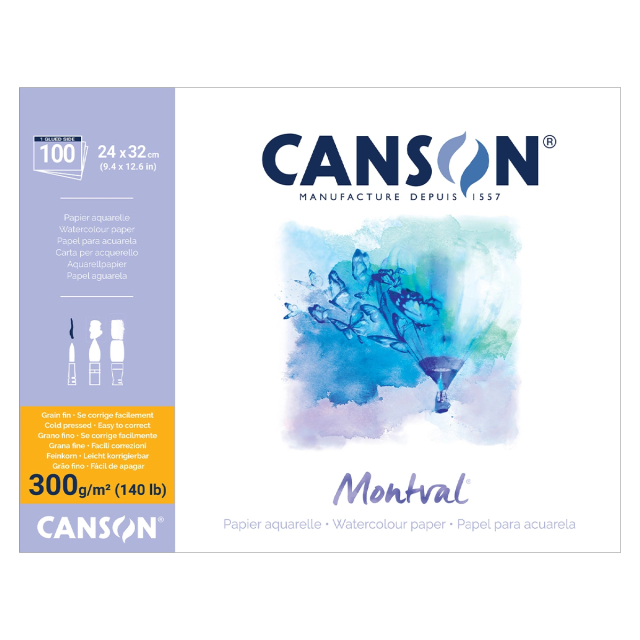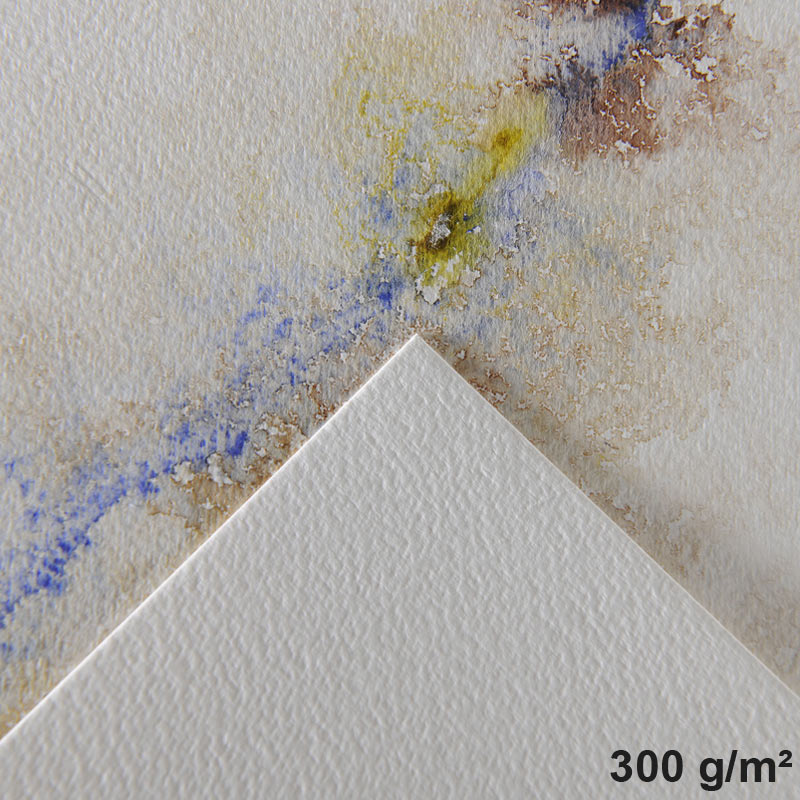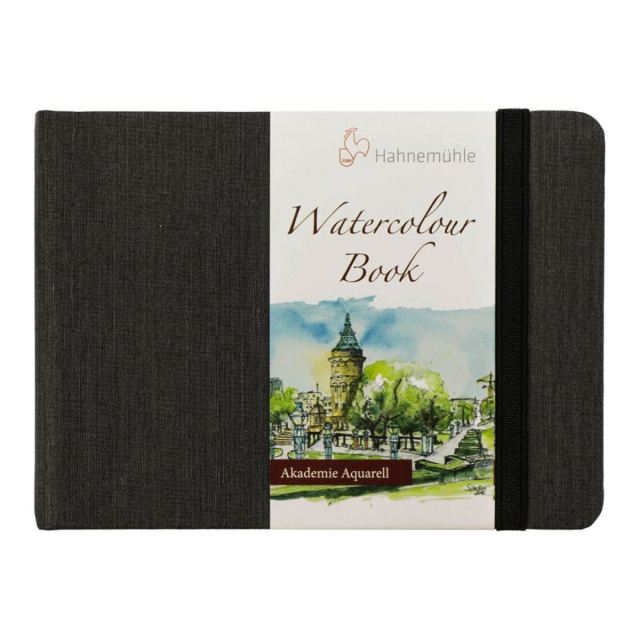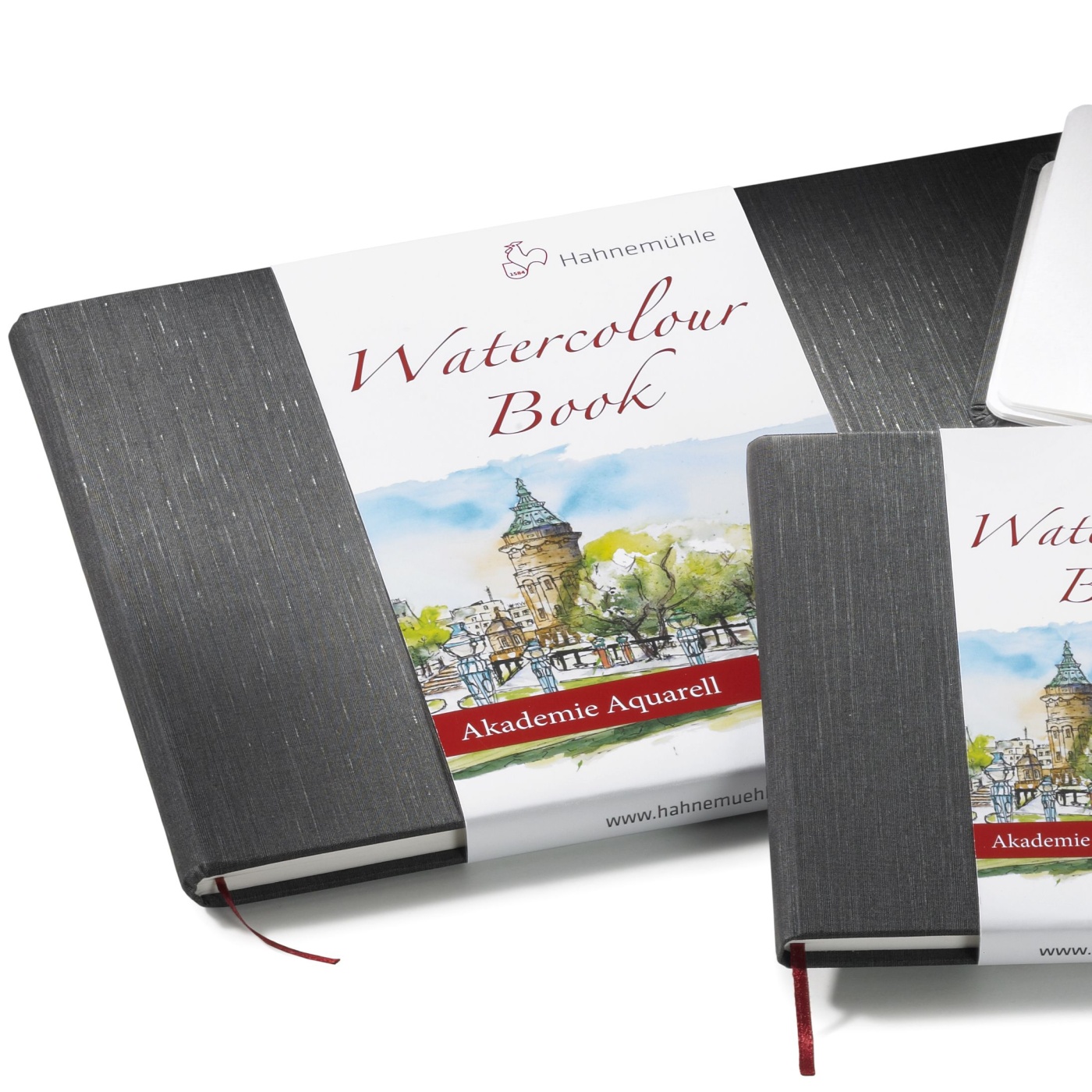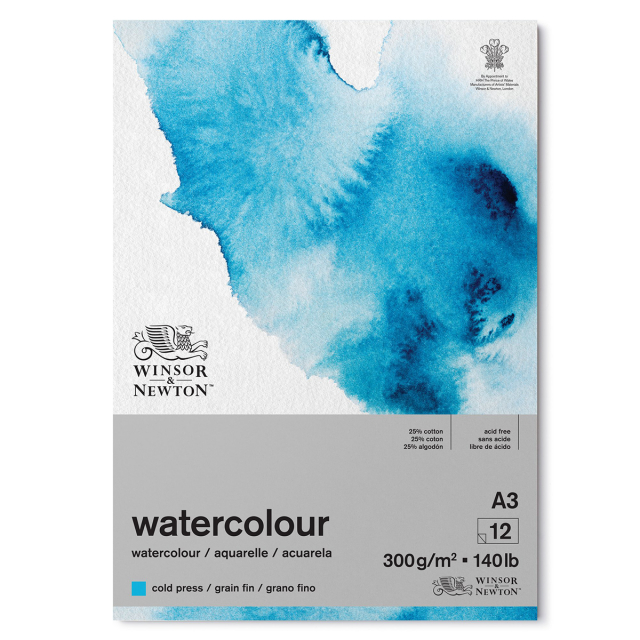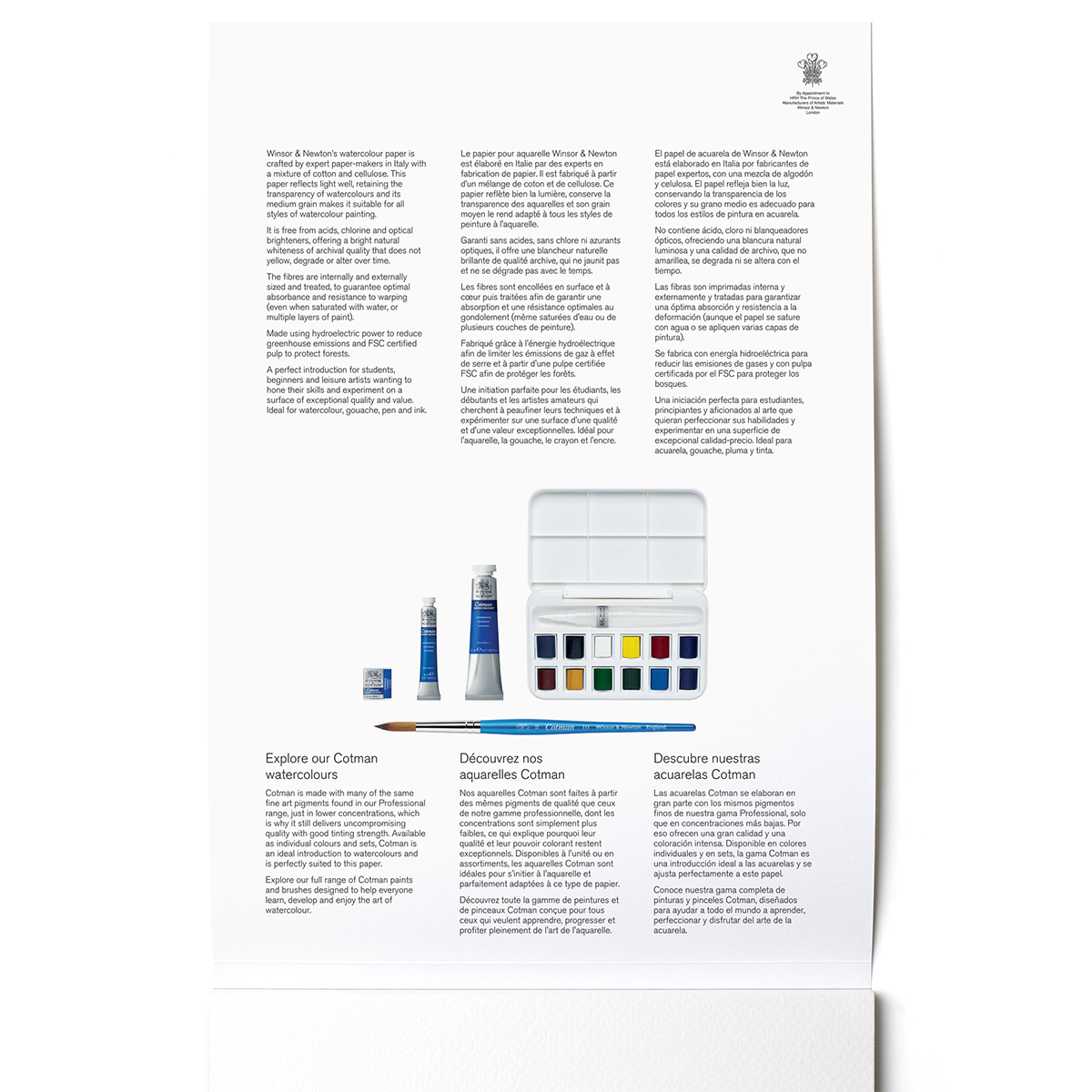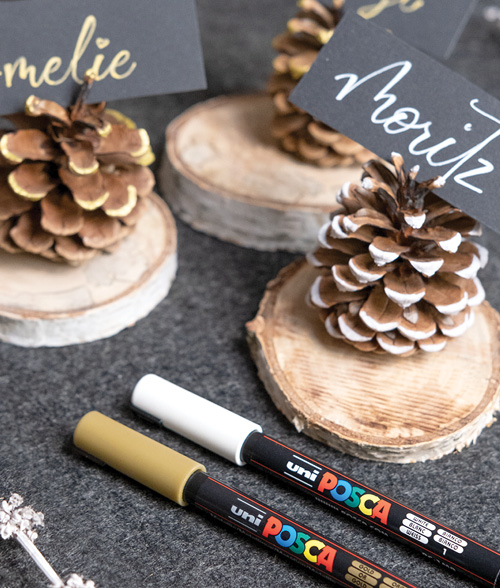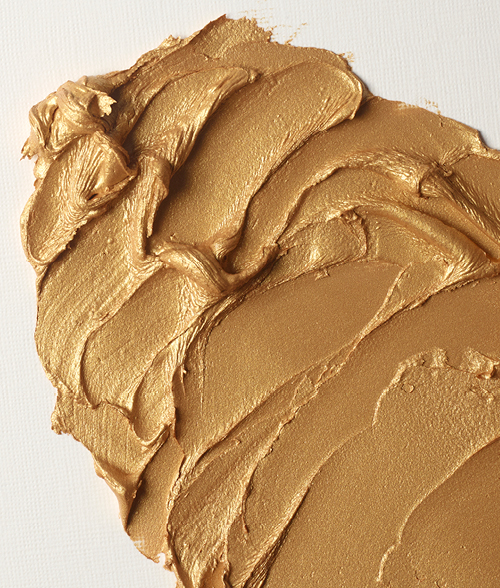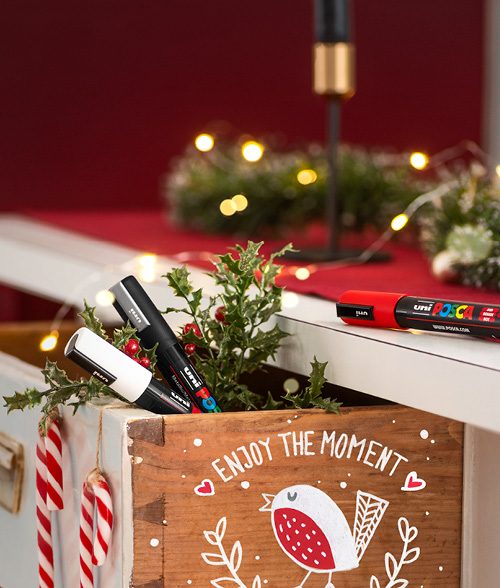What should I consider when buying watercolour pads? In this article we answer the most common questions and share some smart buying tips. We explain terms such as weight, surface texture and composition!
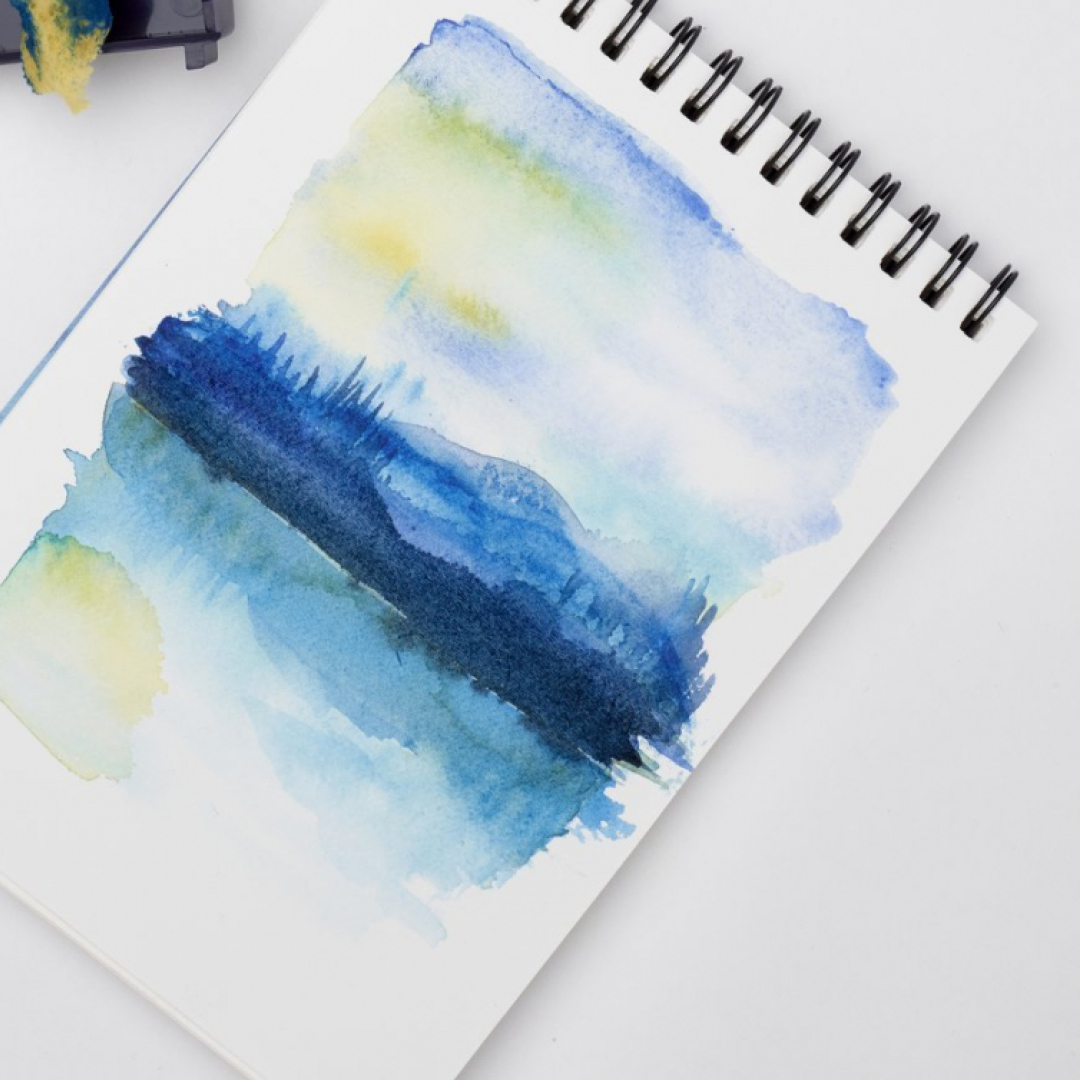
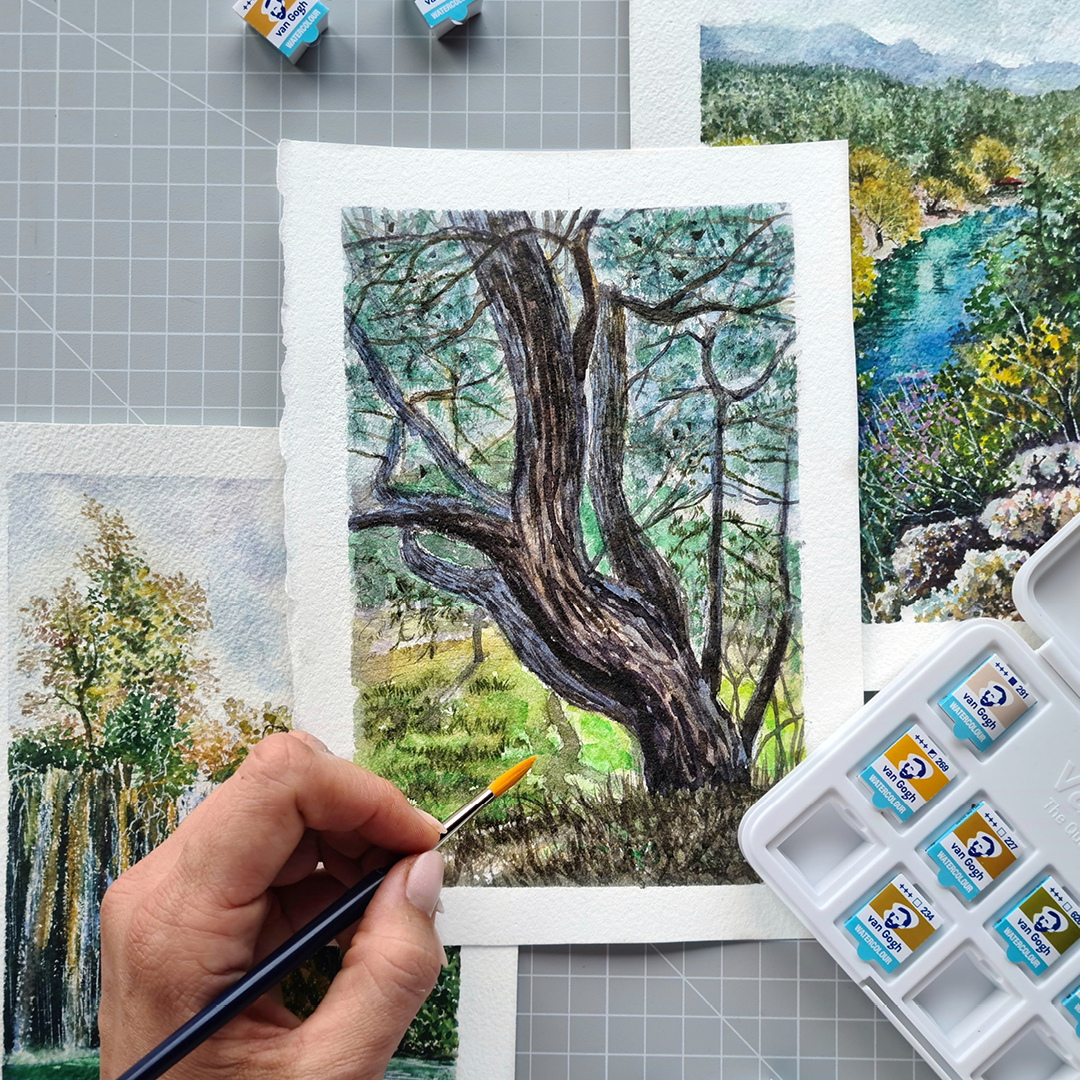
What weight should my watercolour paper have?
When talking about the weight of watercolour paper, it does not refer to how much a single sheet weighs, but to how heavy the paper is per square metre (gsm). It is a measure of thickness and stability. The higher the weight, the thicker and more resistant the paper is to water. Thinner paper can buckle easily if it gets too wet, while thicker paper stays flat and stable even when heavily loaded with colour and water.
- 180–250 gsm: Best for simple sketches or drier techniques.
- 300 gsm: Standard for most techniques. Good balance between stability and flexibility.
- 400–640 gsm: More advanced papers that provide extra stability with heavy water use.
What surface texture should my watercolour paper have?
Watercolour paper can have a smooth or textured surface, depending on the finish. The surface affects how the colour behaves on the paper and how much control you have over your brushstrokes. On a smooth surface, you can achieve sharp lines and fine details with high control, but lose some of the lively and expressive feel that a rough surface offers. Your style and technique will determine what works best!
- Hot pressed/HP (smooth): For detail and precision.
- Cold pressed/CP (medium texture): The all-round surface that works for most purposes.
- Rough (coarse texture): Provides a lively and expressive feel.
What material should my watercolour paper be?
The price of watercolour paper is largely determined by its composition, whether it is made of cotton, cellulose (wood pulp) or a mix. Each option has its pros and cons.
- Cotton: Handles a lot of water without buckling and provides even colour flow. Gives you more control and allows for slower, layered work. Cotton is often more expensive than cellulose.
- Cellulose (wood pulp): Less durable and absorbs colour faster and more unevenly. Dries quickly and is best for simpler or faster techniques.
- Mixed paper (cotton + cellulose): A middle ground where at least 50 % cotton provides better qualities than pure cellulose. A good choice if you want quality at a lower price.
What format should my watercolour paper have?
Watercolour paper comes in several different formats, so you can match the product to your project.
- Sheet: Offer maximum freedom in size and use. Can be wetted and taped down to stay flat while painting.
- Pad: Several sheets glued along the edges to keep the paper in place while you paint. Can also be spiral bound.
- Roll: For those who paint large or want to cut their own formats. Perfect for wall art, long panoramas or experimental projects.
- Book: A sketchbook can hold both quick sketches and finished works. Easy to carry in your bag and always ready when inspiration strikes.
What is the difference between cheap paper and premium paper?
The price of watercolour paper varies depending on material, weight and production. But we believe you should not have to compromise on quality, even as a beginner or if you want to keep costs down. That is why we have only selected products we can truly recommend. They all maintain a high standard and give you the right conditions for successful results!
- Budget: Canson XL, Crevide. Perfect for practice and beginners.
- Mid-range: Winsor & Newton Standard, Hahnemühle Harmony. Balanced quality at a good price.
- Premium: Arches, Magnani, Winsor & Newton Professional. For those who want nothing but the best.
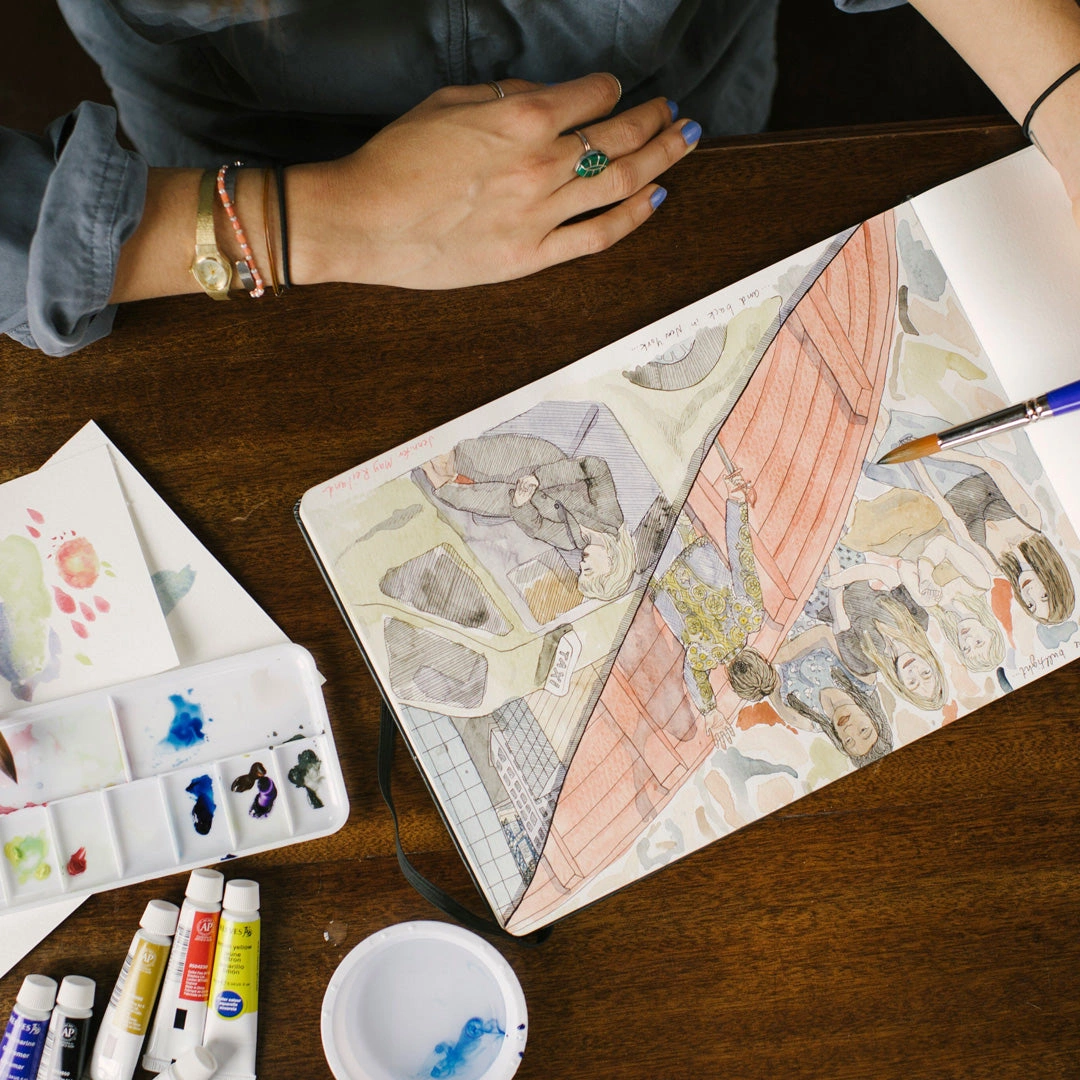
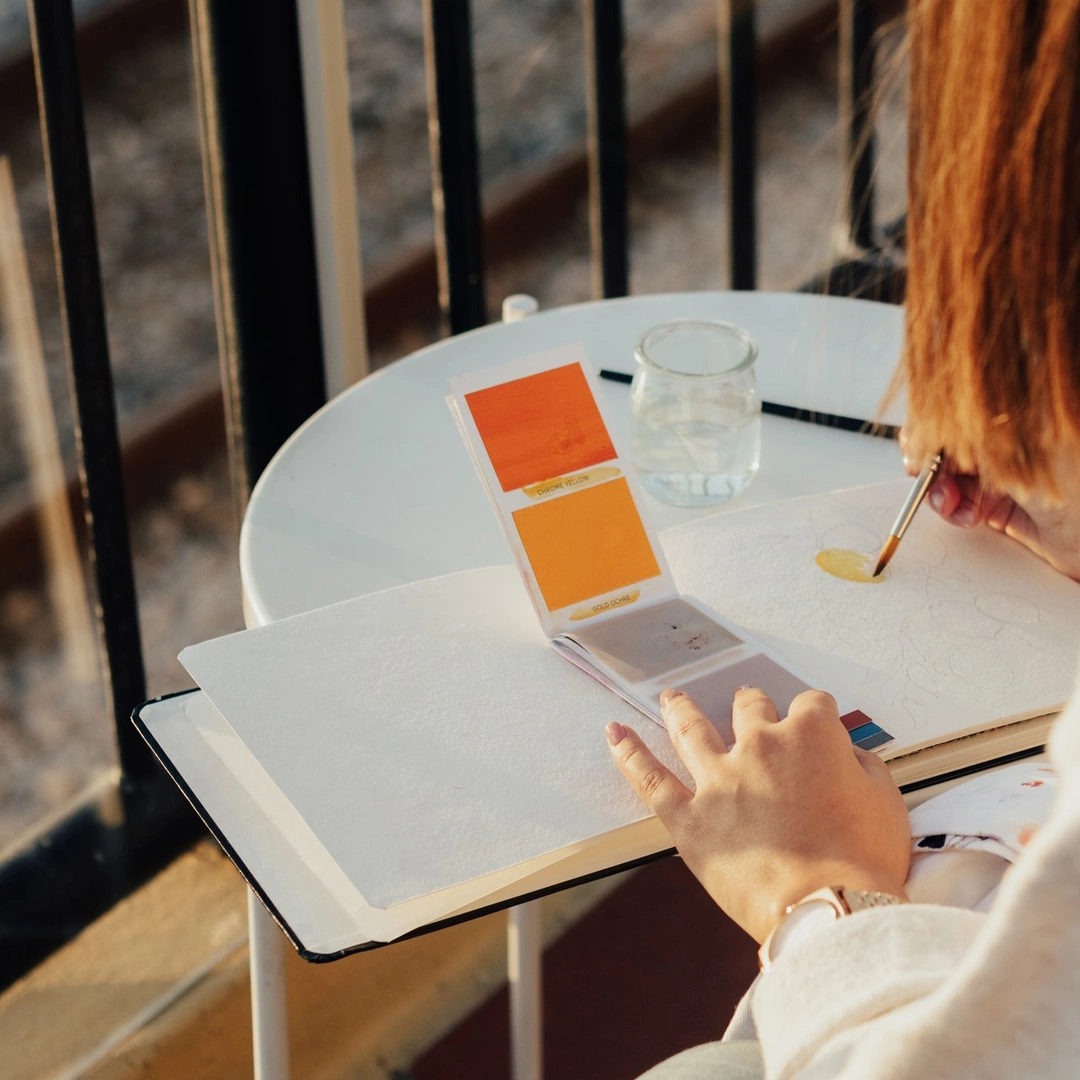
Our best buying tips for watercolour paper
- ✔ Choose the weight according to how much water you use.
- ✔ Consider which surface texture suits the effect you want to achieve.
- ✔ Step up to higher quality (cotton paper) if you paint a lot.
- ✔ Invest in good paper from the start, it helps you progress faster.
- ✔ Base your choice of format on where you plan to paint.
Ready to shop?
In our buying guide we list the best watercolour pads for different occasions!
Tips on watercolour paper →
 United Kingdom (GBP)
United Kingdom (GBP)
